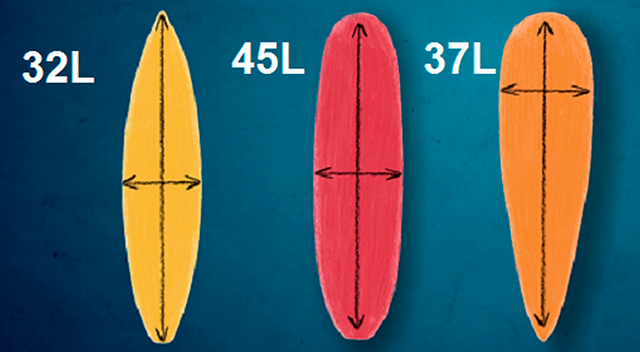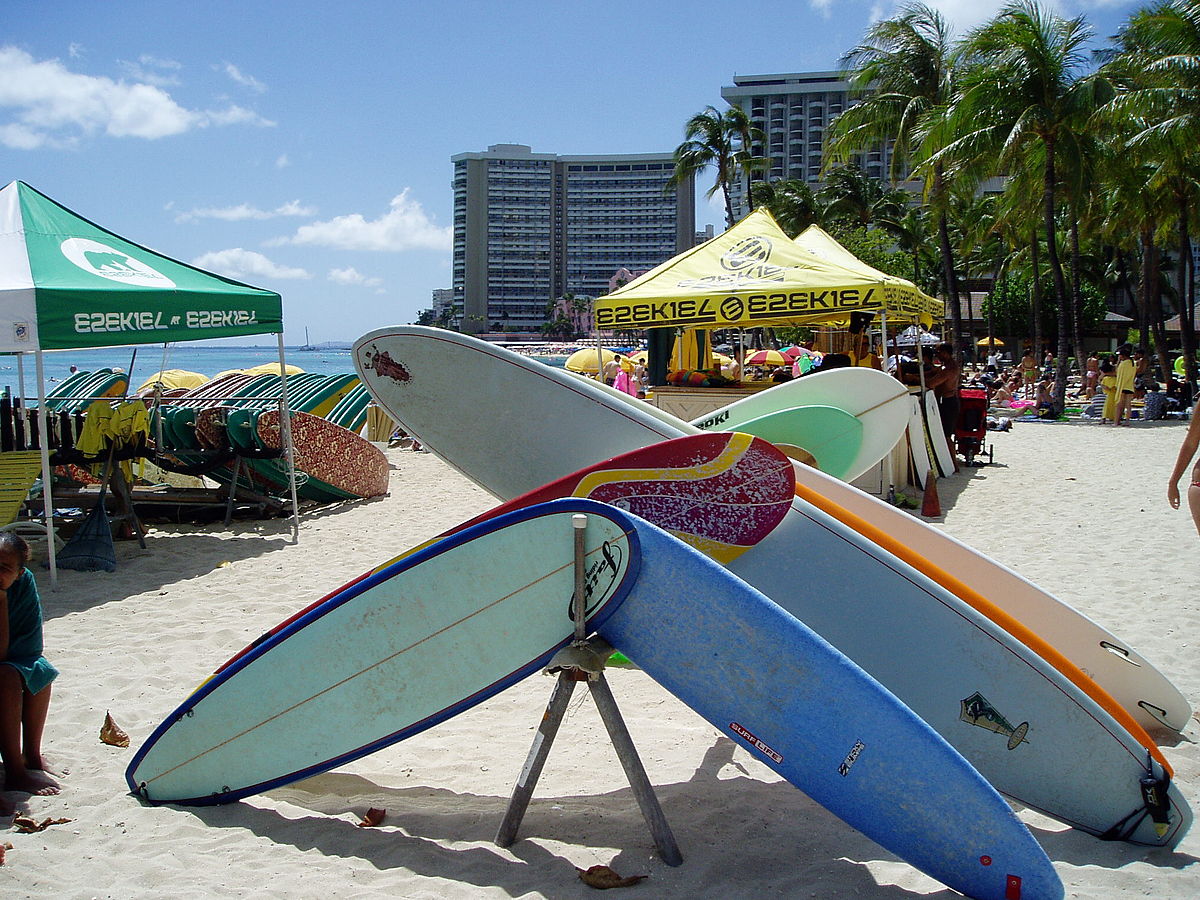Novice surfers often think that board length and type are the only parameters they need to know. However, that’s not the case 🙂 In this article, we’ll delve into what ‘volume’ is and determine the suitable board volume for you.
Table of Contents
What is surfboard volume?
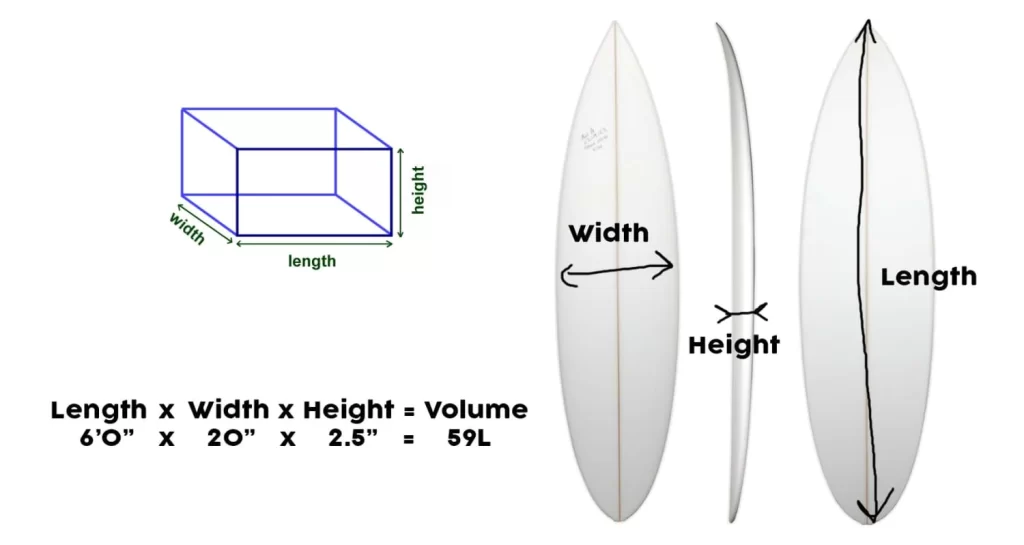
It’s quite simple — the volume of a board is essentially the amount of space the board occupies in the water 🙂 If the board were a cube, the volume would be calculated using the formula (Length x Width x Height). However, the shape of a real surfboard consists of many curved lines and bends, making it a bit more complex.
Back in the distant days of the Soviet Union, the only way to measure surfboard volume was by placing the board in a cast-iron bathtub and measuring the volume of displaced water in cubic meters.
Nowadays, the bathtub has been replaced by computers; manufacturers calculate the volume of boards during the design stage and provide this data directly on the boards, along with linear parameters.
For example, an average shortboard has a volume of 25-35 liters, while a 7-foot funboard occupies 40-50 liters. Longboards can go up to 60-100 liters, and stand-up paddleboards (SUPs) can easily accommodate even a cast-iron bathtub — 250 liters.
Why is volume important?
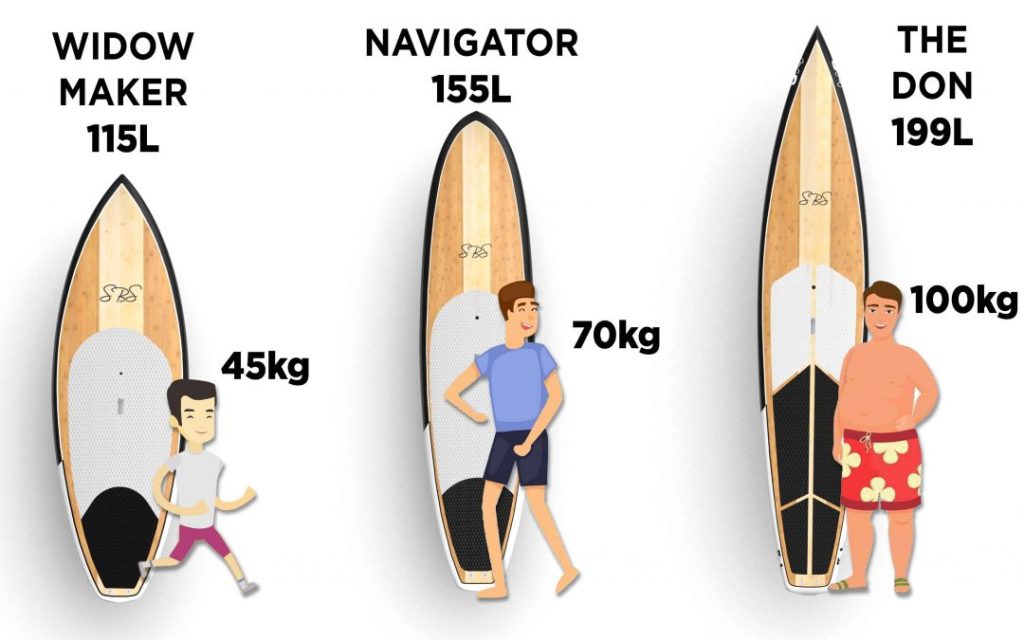
What purpose does this (extra) parameter actually serve? The key lies in the fact that only volume provides an understanding of the real size of the surfboard. Since the ‘Retro Revolution’ of the early 2000s, surfers have been riding boards with a wide range of linear dimensions.
The three standard measurements (length, width, thickness) alone no longer determine which board is right for you. It’s possible to craft three boards with exactly the same length and width, but they’ll look and surf entirely differently!
In essence, volume indicates the ‘float’ of the board, i.e., it helps gauge how well (or stably) the board will support the surfer on the water. This is crucial because the more stable the board keeps you on the water, the fewer body movements occur during paddling, allowing you to move across the water more quickly. The faster you paddle, the more waves you can catch, and the smoother their faces can be.
Therefore, the heavier the surfer, the more volume the board needs. It’s essential to understand the optimal volume-to-weight ratio for a specific surfer.
This leads us to a critical relationship between the surfer’s weight in kilograms and the board’s volume in liters, expressed as a percentage. This seems to be the most intuitive way to convey such relationships. For example, for an 80-kilogram surfer riding a 40-liter board, the ratio would be 50%, while for a 40-kilogram surfer on the same board, it would be 100%.
Here are a few more examples:
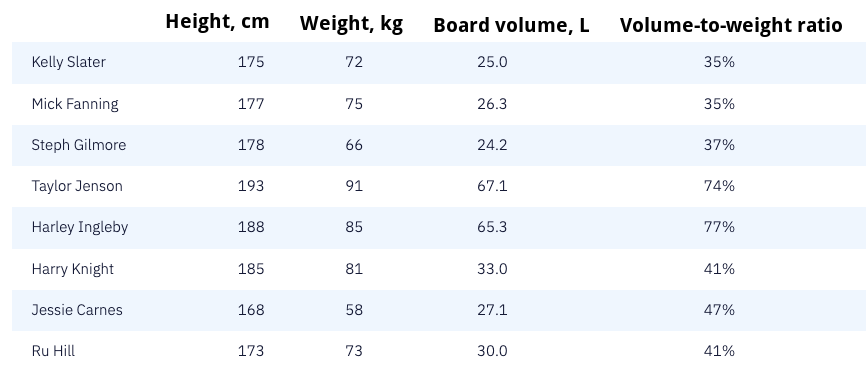
What to do with this information?
Excellent question. When choosing a surfboard, there are no strict rules. Many people learn on tiny shortboards from day one, while others purposefully choose only longboards over 9 feet, and representatives of both groups become world champions. In the final decision, there will always be a huge amount of subjectivity, and a board that one person likes may not suit another.
At the same time, any board size should not be seen as a ‘goal,’ but maneuvers on the board should be seen as the goal. The misconception that plagued surfing for decades is the idea that a smaller board equals a better surfer, and too many people consider the size of their board or its absence as an indicator of their abilities in the water.
The problem is that, while theoretically it’s easier to turn on a smaller board than on a larger one, it’s also easier to adopt poor technique, which in the long run will hold you back much more than an extra 10 liters. Too small a board will be slow to gain speed, catch waves late, slide in turns, and overall make your surfing terrible.
On the other hand, a board that is too big has only one drawback: if you have bad technique, you won’t be able to cheat and try to turn the board with the upper part of your body. Small boards make it easier to cut turns, which can deceive you into thinking that you’re carving turns better, but in reality, learning to carve turns is more challenging on a low-volume board because you have less speed and lift.
Devon Howard demonstrates that the key to excellent surfing is good technique, not a small volume.
Surfing is, above all, entertainment, but at the same time, it can be one of the most challenging sports to learn. The high degree of technical precision combined with a relatively small number of repetitions per session and the constant change in the surface we ride on can make mastering new techniques extremely difficult.
Therefore, we must do everything possible to ensure that the ratio of successes to failures is not too low and does not deprive us of enjoyment.
In our experience, the most common cause of disappointment in water riding is the use of surfboards that do not allow for mistakes when practicing new techniques. No matter how skilled you are, you don’t want small errors to cost you the entire wave because it will either push you toward ‘safe surfing’ or leave you defeated, and in either case, your development will quickly stagnate.
Here’s what you should do: use this information as a starting point to help you choose a board on which you can work on the technique you want to add to your arsenal. There are plenty of ‘volume calculators,’ but they often cater to shortboards or are too vague to be useful, so we decided to create our own.
We utilized our collective experience gathered from hundreds of surf tours, and then, using surfer levels:
Level 1: From a few days to a few weeks
Level 2: From a few weeks to a few months
Level 3: From a few months to a few years
Level 4: From a few years to a few decades we created suggested volume-to-weight ratios for mastering various skills. Our chart is not meant to tell you what board size is ‘right’ for you. Instead, it shows at which point, when practicing a new skill, the ratio of successes to failures can lead to disappointment.

So, no matter how experienced a surfer you are, if you’re trying to improve your take-offs at an angle, you can see on the ‘Knowledge Tree’ that this is a skill at the 2nd level. And although you can learn or refine these skills on any board, from our experience, you’ll progress faster and have more fun if you ride a board within the suggested minimum ratio for 2nd-level skills. When you return to free surfing, you can ride any board you usually ride, but hopefully with an improved take-off angle.
We have a fully interactive version of the volume-to-weight ratio chart.
Volume is not an absolute truth in the construction of a surfboard, but it is the most accurate way to compare the vast array of boards available on the market. If you want to learn more about how a surfboard is constructed, read this article. Otherwise, find the optimal volume that matches your physique, abilities, and comfort level in riding, and see what boards you can find in that range. Then, if you have to choose between several, always go for the slightly larger board — you won’t regret it. As Rob Machado says, ‘foam is your friend.’

